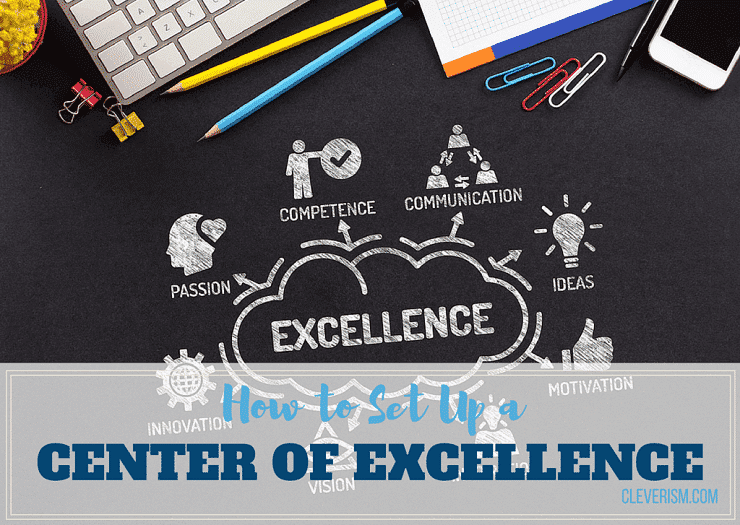A Marketing Centre of Excellence can be defined as a physical or virtual centre of knowledge that brings together the existing expertise and resources, adds to it where required and optimises marketing in a way that ensures a high rate of efficiency, performance and value.
The scope and goals of the Marketing Centre of Excellence are very clearly defined down to all the specifics and every effort should be made to leverage resources optimally. The aim is to push beyond performance boundaries to deliver great value and excellence.
Setting up a Marketing Centre of Excellence is not complicated. This is how the Lifecycle of a Marketing Centre of Excellence works –
Marketing COE Lifecycle
1 – The First Stage Is Assessment
Here the team takes the time to understand marketing goals and current capabilities, map and identify gaps. The vendors that can’t be replaced are agreed upon and based on the gaps identified; a plan is made for the right sized Marketing Centre of Excellence
2 – The Next Is On-Boarding
A Steering Committee is set up and everyone agrees upon SLAs and processes. Then the team is set up based on the requirement and skills needed. All gaps are filled and the team equipped with machines that can be securely connected over a VPN.
A proof of concept is done first and then one can move on to BAU mode.
3 – BAU Operations
There are some stages in the setting up of the BAU operations which look like this –
- Brief the CoE Single Person of Contact (SPOC)
- SPOC confirms understanding of brief with the initiator.
- SPOC communicates brief to the CoE team.
- CoE team members access MarTech and Analytics platforms securely.
- CoE team completes tasks and delivers Quality-Checked output.
4 – Assessment and Course Correction
The Steering Committee meets regularly and reviews the processes and the deliveries. Any areas that need improvement are quickly spotted and corrective measures taken. If there is a need to scale the engagement of the Marketing Centre of Excellence, it is done in line with business goals or market conditions.
But to run a Marketing Centre of Excellence, it needs the right kind of people to handle the processes involved – a team of multi-disciplinary experts – to setup a Marketing Centre of Excellence that can build and relay micro-communication for various channels such as your website, search ads, display ads, video ads, email ads, social pages, browser notifications, 1:1 email, SMS, mobile push, voice call communication targeted at your existing customers at scale without compromising on quality.
This means it is essential for marketers to be well-versed in the Digital Marketing Fundamentals so that they are all familiar with the above-mentioned concepts. Any lack of their knowledge needs to be handled immediately by encouraging them to upscale their skills, as any lack of proficiency will lead to the collapse of the whole system. Also, a regular assessment is needed so that the team which handles the process keeps updating their knowledge as there are always additions in the digital marketing field. Moreover, learning the fundamentals of digital marketing is not optional anymore and has become essential in several domains.
Marketers are all familiar with the first set of experts involved. They are
- The Big Idea Makers
- The communication and campaign strategists
- The creatives builders
- The Campaign Management experts
- The Response Optimizers
When communication has to happen across tens of channels covering hundreds of micro-segments, that is where even agencies fail. This is where the process and the core operations of a Marketing Centre of excellence come in.
In every Marketing CoE, there needs to be a system that manages every ongoing program and NOT just projects or campaigns. This is long-term, takes a high level view of operations, and establishes systems and methods by which a program’s strategy is defined, authorized, and monitored. This is the overall framework for the execution of marketing programs at a corporate level.
Some Key Components That Drive Program Governance
The Governance Team
The Governance Team has all the stakeholders involved.
Program Sponsors – Brand
A Marketing CoE should be embraced and sponsored by the senior marketing leaders in the company. A Program Sponsor is your leadership team that sponsors the Marketing CoE and includes the Chief Marketing Officer or the Head of Marketing and Senior Leaders from Technology, Analytics and Finance. The overall success of the Marketing CoE is vested with this team.
Steering Committee
The Steering Committee is responsible for the overall success of the Marketing Centre of Excellence, and includes a Program Director, Product Heads, an Account Director or equivalent and the Head of Strategy, who will provide strategic inputs to Product Heads.
The Account Director must have a strong understanding of the entire ecosystem – its strengths and weaknesses – which will help in the scrutiny of proposed strategies from a feasibility perspective. The Head of Strategy should be neutral and unbiased to ensure that the most suitable strategies are formulated.
Product Marketing Team
If you have multiple Products / SBUs, there needs to be representatives from each of them, preferably from Product Marketing. They are responsible for the translation of corporate-level product strategies, management of offers and promotions and the prioritization of tasks in line with business priorities.
Business Analyst
It is important that there is a Business Analyst with a cross-functional understanding to manage CoE deliveries, co-ordinate with the Product Marketing team, understand the brief and communicate this to the delivery team. He or she must catch any communication gaps right at the first point of the information flow by preparing Business Requirement Documents, Activity Requirement Documents and Instruction Documents.
- A Business Requirement Document (BRD) captures the business brief and transmits this to the delivery team. All jobs that require interpretation and strategic / creative thinking from the delivery team should have a BRD.
- An Activity Requirement Document (ARD) explains the sequence of activities that need to happen to achieve the intended business objective. Jobs that don’t require strategic thinking can directly be initiated through an ARD.
- An Instruction Document (ID) stipulates what needs to be done. Jobs that don’t require any form of interpretation can be initiated via ID.
Examples include replacing a text or image in a website.
All these documents should be shared with the job initiator to confirm understanding and ONLY upon approval, should they be circulated to initiate execution.
Cross-Functional Team – Agency
Depending on the scope of the Marketing CoE, there needs to be a proportionate cross-functional team dedicated to the execution of day-to-day marketing tasks.
Typically, this team spans across
- Marketing Consulting
- Program Management
- Creative
- UI Engineering
- Content Management
- Social Media
- Digital Marketing
- Marketing Automation
- Campaign Management
- Yield Management
- Analytics
- Data Science
- Tech Support
It is very important to make sure that the entire team is aligned in thought, has a common objective and ensures there is no friction between teams.
By Jayanthi K
The author is having a decade and a half of experience in content writing and content marketing spread across different sectors and presently working with Xerago as a Senior Content editor.








